
 |
About UNAM
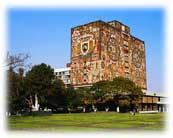
|
Because of its history, of its strong educational influence on the majority of other universities, of the variety and great quality of the research that it undertakes, of the number and diversity of cultural activities it carries out; because of the broad coverage of its study programs and curricula in its different educational levels, of the academic qualifications of its teaching staff and the number of students it attends, the National Autonomous University of Mexico is the most important university in the country and has made significant contributions to the development of the nation.
|
 |
|
 |
About the Faculty of Economics
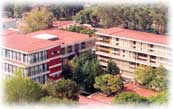
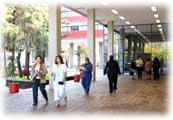
|
The Faculty of Economics at the National Autonomous University of Mexico (UNAM) is the oldest and one of the most prestigious and influential schools of economics in Mexico. The aim of the Faculty is to offer a broad and critical approach to the study of the discipline within the context of a rigorous training in mathematical and statistical modeling techniques required by the modern economic research. A large number of the Faculty's distinguished scholars are Fellows of the Mexican National Academy of Science and Technology (CONACYT). The Faculty of Economics offers exceptional opportunities for undergraduate and graduate study and research. The Faculty's research work centers on a variety of topics such as economic history, development economics, political economy, fiscal and monetary policies, applied econometrics among others. Many faculty members and students have served in key public and private institutions within the country.
Our Faculty of economics is among the most advanced in Latin America in the field of applied economics through its Centre of Economic Modeling and Forecasting (CEMPE). Such body offers the necessary forecasting and modeling resources to private companies and public institutions in Mexico and other countries in the region. |
 |
|
 |
About Mexico
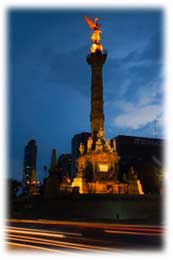
|
Mexico is a federal republic made up of 31 states and 1 Federal District ( Mexico City ) occupying 756,066 square miles in North America . The country shares a border with the United States of America to the north, Guatemala and Belize to the south, and is bounded on two of its sides by the Gulf of Mexico to the east and the Pacific Ocean on the west.
Almost two thirds of Mexico 's 104,959,594 people live in cities. The country's capital, Mexico City and its metropolitan area are inhabited by over 19 million people and is one of the largest cities in the world. Over 95% of the population speaks Spanish, which is the official national language. About 90 percent of Mexico 's population is Mestizo (mixed European and Indian descent) and 10 percent is Indigenous (Native Americans or Indians, including Maya, Zapotec, Mixtecs, Nahua, Totonacs and Tarascos). There is no official religion in Mexico but over 95% of the people practice Roman Catholicism.
The country is abundant in natural resources. It is the world's greatest producer of silver, and also produces petroleum, zinc, lead, gold, mercury, coal and copper. It also has a great variety of climate zones, plant life and animals.
Mexico is popular with travelers from all over the world. They visit the country for numerous reasons: Beaches, colonial cities, archaeological sites, rich gastronomy, crafts and natural beauties. |
 |
|
 |
About Xochicalco
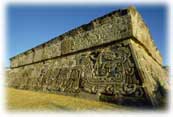
A thousand-year-old Heart
that refuses to die |
A great cultural richness exists in the Heart of Mexico, unrivalled in any other part of Mexico and maybe in any other country in the world. In simple terms, it is the central setting for the autonomous development of a thousand-year-old civilization, as advanced for its time as those of Egypt or China, to mention just two. The contemptible image of a Mexico made up of a multitude of wild, with no culture or philosophy, has collapsed and been smashed to pieces, leaving behind a glorious reality.
We can discover the true essence of Mexicans in the Heart of Mexico. Thanks to a long, fruitful labour, archaeologists, historians and museum curators have brought to light many of the wonders of our past. We therefore proudly invite you to come and discover our origins, to visit the fantastic archaeological sites and museums located in the Heart of Mexico. |

Xochicalco Morelos
"Florid Heart" |
At the end of the first millennium of our era, an amazing city named Xochicalco, "Place of the house of flowers", by Sahagún, flourished and this city, due to its refinement and grandeur, could be considered to be the direct successor to the great Tolteca culture. Named Cultural Patrimony for Humanity by UNESCO, according to the archaeologist Piña Chan, Xochicalco could be the legendary Tamoanchan, the place where a consolidation of arts, philosophy and religion took place, and where an adjustment, of the calendar system between the most important cultures in ancient Mexico occurred.
Everything in Xochicalco is art and of profound significance. Built on top of a hill, like a Fortress City, you'll be impressed by its so-called Ramp of Animals, a flagstone path whit images of jaguars, snakes, monkeys, owls, eagles and butterflies; by its Pyramid of Feathered Serpents, where the calendar adjustment became reality; by its Observatory located in a cave; as well as by the only permanent ecological museum. If anyone is in doubt about the splendour of our history, should visit Xochicalco, a great legacy for Mexicans, which has been passed down through the ages by our wise forefathers.
 More information More information
|
 |
|
|
|
|



